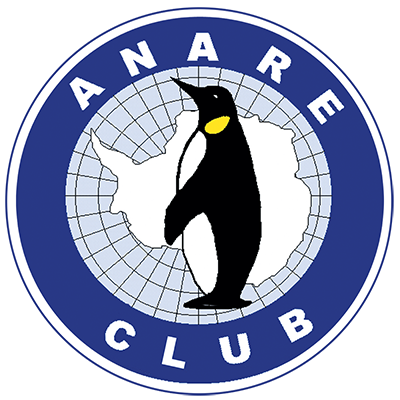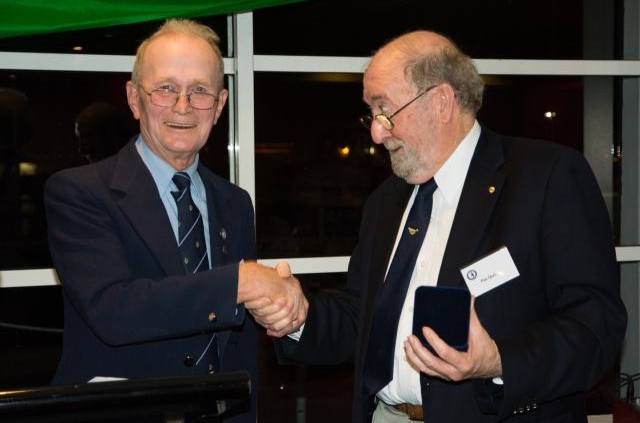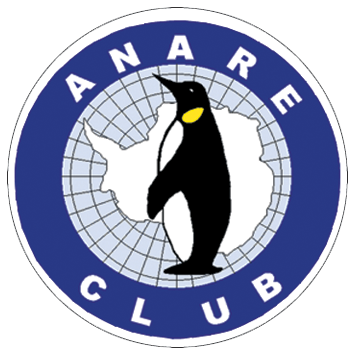Patrick Quilty
Patrick Quilty AM wrote:
My memories of Phillip Garth Law
My first venture south with the Australian National Antarctic Research Expeditions (ANARE) was to Macquarie Island at the end of 1968, in company with, inter alia, Martin Betts and the late Murray Price, two who would later become close friends. Thus my association with Phil Law began well after he had left the Antarctic Division, and I never worked for, or with, him.
After joining the Division at the end of 1980, I met him from time to time at conferences, including most importantly, the 1997 symposium (Marchant et al. 2002) to celebrate 50 years of ANARE research. Thus my contacts were pleasant but sporadic. It is fair to say we got on satisfactorily.
The Tasmanian Division Australian and New Zealand Association for the Advancement of Science (ANZAAS) held a symposium at Antarctic Division headquarters early in October 1981 and Phil Law gave the opening address. That was my first ‘formal’ association with him.
I suppose my first memory of Phil as a controversial character was at the ANZAAS meeting held at Monash University. I was chairing a session along normal Antarctic lines and due to cease at 12.30. During question time at about 12.29, a woman stated she had heard someone say that Antarctica would be an ideal place to store radioactive waste. Phil piped up to say ‘that was me’. As a coward, I then announced that time was up and thus short-circuited a spirited debate. Phil held strongly, views that were not in line with government policy, and was not afraid to air them.
In 1998, I was one of the lecturers/commentators on a voyage of the Kapitan Khlebnikov, operated by Aurora Expeditions. This voyage departed from Fremantle, via Mawson and Davis, returning to Hobart. I had the good fortune to share a cabin with Dr Law for the three weeks of the voyage and we developed a deep friendship because of similar views on the Antarctic and the role of science. In this, we shared concerns over the approach of successive directors at the time.
As one who did not know him well, I had brought a bottle of a good Scotch whisky to share with my cabin mate, not knowing initially who that was to be. Phil could not stand even the smell of whisky so I blundered there but luckily Bill Storer, one of the founding fathers of Mawson, was also on board and Bill and I did the honours to that bottle. Bill had, of course, worked closely with Phil in the early days of our presence on the mainland of Antarctica, including the foundation of Mawson. The origin of his dislike of Scotch was during his days as an intervarsity boxer when, during his earliest naïve days, someone gave him a bottle of Scotch and he drank it, apparently leaving an indelible impression.
At the stations, including Law Base, and at the Chinese base of Shong Shan in the Larsemann Hills, he was very active, re-visiting his old haunts with very well-developed memory of early days. He missed nothing and re-climbed earlier vantage points to note changes since ‘his’ days.
An interesting (well, to me at least) feature of the voyage was that Phil suffered no seasickness, when he was renowned as a seasickness-sufferer in his early days. The change we surmised was due to his deafness later in life.
Following my return from that trip, I had more to do with him, including lunch at the Kelvin Club when he brought a bottle of his good red wine which he had opened earlier at home. The excellent sketch of Law by Roy Hodgkinson hangs there. That image caused a later exchange of correspondence with Phil (see below).
One event that stands out was a visit I made to his home in Canterbury. My sister Anne, then associated with Monash University but not at the main campus, came along and she and Phil clicked immediately. We arrived in time for a formal morning tea prepared by Phil – all done properly according to protocol. Typical. Very quickly, they found the connection through the Victorian Institute of Colleges – his other major success. The discussions led on to his life with Nell and he opened up her art collection for us to have a look at. It was an excellent morning, not just a few minutes, and Anne and I had long discussions after this event.
In June 2004, the Royal Society of Victoria asked me to escort a group of about 20 around Tasmania for a week culminating on 8 June in Campbell Town to observe the Transit of Venus. Phil Law was one of the more enthusiastic attendees and missed nothing. This was the first time I had the chance to spend more than a few minutes or hours with him.
After that, it as mainly meeting at events such as his 95th birthday celebrations at the Melbourne Club. The last time I saw Phil was at the Neumayer Symposium held at the Royal Society of Victoria headquarters in May 2009. He was a stooped, frail old man until a microphone was available when the voice and mental acuity of many years came again to the fore.
I regret not having had the chance to work with him. He was of a generation when strong wills could voice opinions and get things done, walking over the bureaucracy. I have a few good friends now in their 90s and in my Christmas cards, beg them to continue to be inspirational to the younger generation. I now am retired to university. People with the individuality and the sort of strength of will typified by Phil Law are now few and far between; they scare the bureaucracy. This is to society’s loss.
Reference
Marchant, H.J., Lugg, D.J. and Quilty, P.G. 2002. Australian Antarctic Science: the first 50 years of ANARE. Australian Antarctic Division; Kingston, 622 pp.
Law has a paper entitled ‘Developing ANARE research programs’, p. 15-19. As a footnote, I was returning in 1999 from ‘doing’ the Canning Stock Route with Dr Eric Canning (Eric was Alfred Canning’s grand-nephew and my father worked for a time in the 1920s as an office boy for Alfred Canning), when I came through Jamestown in South Australia, where there is the Hubert Wilkins Aerodrome as a tribute to a local hero. As part of a small display about Wilkins, there is a book entitled ‘Sir Hubert Wilkins: his world of adventure as told to Lowell Thomas’. It was published in 1961/62 by Readers Book Club and distributed in each state by the state’s leading newspaper. My copy is from the Herald-Sun Readers Book Club, and it was distributed in South Australia by the Advertiser Readers Book Club. THE IMAGE ON THE DUST COVER IS SUPPOSED TO BE OF WILKINS, BUT IT IS LAW! It is based on the Hodgkinson image but it has been redrawn and flipped 180° so that instead of looking to the left as in the original (see the image on the cover of Kathleen Ralston’s book ‘Phillip Law: the Antarctic exploration years 1954-66’), it has him looking to the right. We had some correspondence about that. Not happy!




